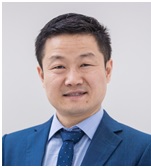报告时间:3月5日,10:00-11:30
报告地点:西溪校区西七楼343室(光子材料与器件研究室)
报告题目:Upconversion Super Dots, tau Dots, Hyper Dots and Thermal Dots for Photonics Applications
报告人介绍:
Distinguished Professor JIN, Dayong(金大勇)
University of Technology Sydney(澳大利亚悉尼科技大学)
Email: dayong.jin@uts.edu.au
 金大勇,悉尼科技大学生物医学材料及仪器研究院院长,澳洲国家可集成生物医疗仪器与技术转化基地所长(ARC Research Hub for Integrated Device for End-user Analysis at Low-levels), 近三年内作为通讯作者先后在《自然》及子刊中发表了九篇原创性工作(Nature 2017、Nature Nanotechnology 2013、Nature Photonics 2014 和 2018、Nature Communications 2014 和 2016、Light: Science & Applications 2016 和 2018),和一篇特邀综述(Nature Nanotechnology 2015)。同时他也是六项国际专利的发明人。凭着在交叉学科取得的卓越成就,他荣获了2015年澳洲国家级科研最高奖¾¾尤里卡奖交叉学科创新奖。他也是2016年澳大利亚百名科技创新领军人物,和2017年澳洲科学院工程科学奖John Booker奖章获得者。2017年十月, 金大勇教授作为第一个华人科学家获得澳大利亚总理奖 - 马尔科姆·麦金托什 - 年度理工人物。
金大勇,悉尼科技大学生物医学材料及仪器研究院院长,澳洲国家可集成生物医疗仪器与技术转化基地所长(ARC Research Hub for Integrated Device for End-user Analysis at Low-levels), 近三年内作为通讯作者先后在《自然》及子刊中发表了九篇原创性工作(Nature 2017、Nature Nanotechnology 2013、Nature Photonics 2014 和 2018、Nature Communications 2014 和 2016、Light: Science & Applications 2016 和 2018),和一篇特邀综述(Nature Nanotechnology 2015)。同时他也是六项国际专利的发明人。凭着在交叉学科取得的卓越成就,他荣获了2015年澳洲国家级科研最高奖¾¾尤里卡奖交叉学科创新奖。他也是2016年澳大利亚百名科技创新领军人物,和2017年澳洲科学院工程科学奖John Booker奖章获得者。2017年十月, 金大勇教授作为第一个华人科学家获得澳大利亚总理奖 - 马尔科姆·麦金托什 - 年度理工人物。
Distinguished Professor Dayong Jin directs the Australian Research Council IDEAL Research Hub and Institute for Biomedical Materials & Devices (IBMD), at the University of Technology Sydney. His research has been in the physical, engineering and interdisciplinary sciences. He is a technology developer with expertise covering optics, luminescent materials, sensing, automation devices, microscopy imaging, and analytical chemistry to enable rapid detection of cells and molecules and engineering of sensors and photonics devices. Prof Jin is the winner of the Australian Museum Eureka Prize for Interdisciplinary Scientific Research in 2015, the Australian Academy of Science John Booker Medalist in 2017, and the Prime Minister’s Malcolm McIntosh Prize for Physical Scientist of the Year 2017.
摘要
Upconversion nanoparticles have found numerous applications, based on their tunable photo-physical and chemical properties. My talk will summarize our recent contributions to the field by discovering a new library of super dots using the state-of-the-art nanophotonic tools for single particle studies. We emphasize that nanophotonic characterization of single fluorescent nanoparticles is the key in discovery of new physical properties of and translating the new nanomaterials into novel applications. Possibilities and challenges in development of high performance fluorescent nanomaterials/hybrid nanostructures, high horizontal characterization techniques, and ongoing trend towards biophotonics and nanophotonics applications are discussed.
Our Key Papers
[1] Zhao J, et al, Nature Nanotechnology, 8, 729-734 (2013),
[2] Lu Y, et al, Nature Communications, 5, 3741 (2014),
[3] Lu Y, et al, Nature Photonics, 8, 32-36 (2014),
[4] Zhou B, et al, Nature Nanotechnology, 10 (11), 924-936 (2015)
[4] Liu D, et al, Nature Communications, doi:10.1038/ncomms10254 (2016),
[5] Liu Y, et al, Nature, doi:10.1038/nature21366 (2017)
[6] Wang F, et al, Light: Science & Applications, doi: 10.1038/lsa.2018.7 (2018)
[7] Zhou J, et al, Nature Photonics,doi:10.1038/s41566-018-0108-5 (2018)

